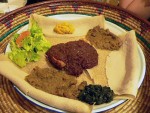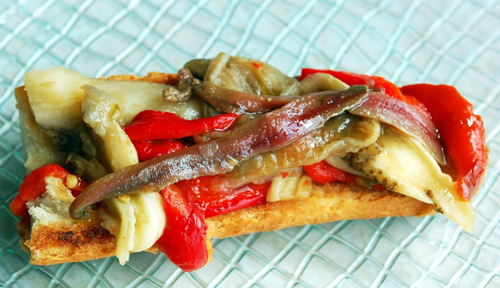
Escalivada, Catalan roasted vegetables. Photo courtesy of Driftwood Journals.
In this guest post, our friends at Food Lovers Company—a company run by two Barcelona locals that specializes in authentic culinary experiences for discerning travelers in their city—share a few of their favorite Catalan foods (and drinks). ¡Salud!
Catalonia, in northeast Spain, offers gastronomic pleasures from two important perspectives: the traditional and the modern. This region is, after all, home to one of the best restaurants in the world, El Celler de Can Roca, committed to the avant-garde—and, in our city of Barcelona, plenty of traditional flavors from the kitchens of small bars, wineries, and restaurants. Here we focus on the latter, some of our favorite bites (and sips) of authentic Catalan cuisine.
How to begin such a summary? The way all good journeys start: with a glass of vermouth in hand.
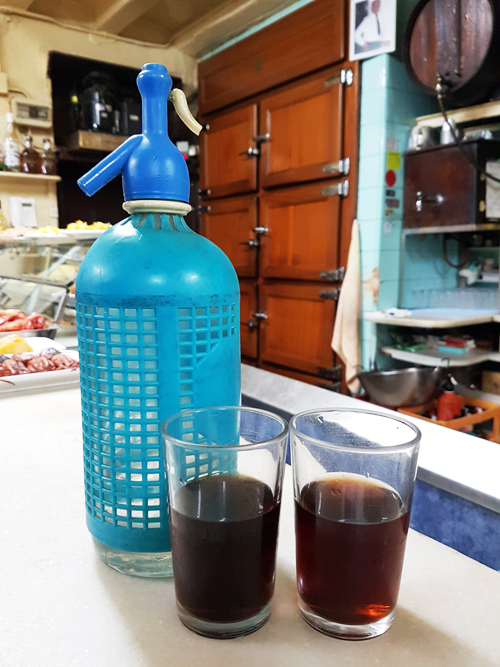
Photos courtesy of Food Lovers Company, except where indicated
Vermut (Vermouth)
Vermouth is primarily known outside Spain as an ingredient, used in small quantities in certain cocktails. But in Catalonia it is served on the rocks or with soda water.
Usually made by small wine producers who produce only a small amount for their clients, vermouth is the most popular drink Catalans order in bars when we meet up with friends to share a few moments and a tapa.
It tastes similar to Italian vermouth, but the local one is sweeter and more aromatic. It is a wine flavored with dozens of ingredients—spices, flowers, herbs—but each producer keeps the recipe secret, of course.

Courtesy of Iñigo Bujedo-Aguirre Photography
Pan con Tomate
The most popular way to enjoy a good pa de pagès (literally “peasant bread,” in Catalan) is to lightly toast it and rub a fresh tomato on its surface. Then a few drops of pure olive oil and a little bit of salt are added. The simplest thing made with such quality products becomes a delight worthy of the most demanding gourmet.

Butifarra amb Secas
Here is the typical midmorning breakfast, or “fork breakfast,” which Catalan workers have around 10 a.m. It can comprise anything that can be eaten with a fork, but it is often butifarra amb secas, a local Catalan sausage with white beans. If the beans are from the region, such as Santa Pau, then you are having the best beans—highly appreciated not only here but also throughout the country.
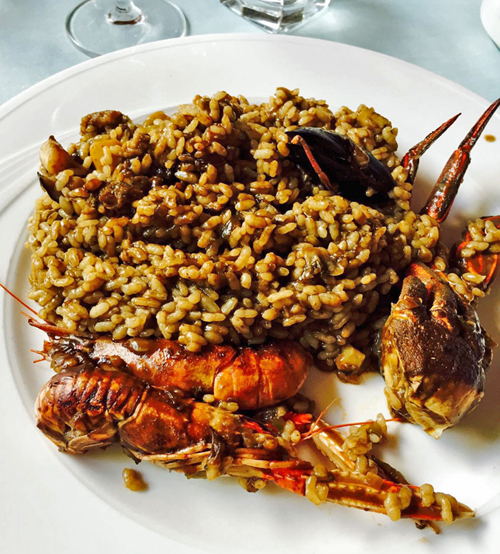
Empordà Black Rice
Black rice is a typical dish that you can find up and down the Catalan coast, made with squid ink. In the Costa Brava and Empordà areas, the black rice is obtained by cooking the onion very slowly until it is well caramelized and honey-colored. This is often served with prawns and sometimes lobster.
.jpg)
Courtesy of Driftwood Journals.
Escalivada
This smoky salad of grilled eggplants, peppers, tomatoes, and onions is dressed very simply, with just salt, olive oil, and sometimes vinegar. The vegetables are roasted beforehand in a little olive oil. The peppers are placed directly on the open flame of a gas stove. It’s unforgettable! Trust us.
It’s beautiful on bread, and usually served with cured anchovies, but this also pairs well with grilled meat.
.jpg)
Horchata
A truly unique beverage, this sweetened vegetal milk is produced only on the Mediterranean coast of Spain, and consumed fresh from spring to autumn. A different beast from Latin American horchata (in Mexico, for example, it’s typically made from rice), our horchata is made with chufas (tiger nuts), a small tuber that grows on the Mediterranean coast, principally in Valencia. We add only water and sugar. It is very nutritious, refreshing, and, of course, delicious.
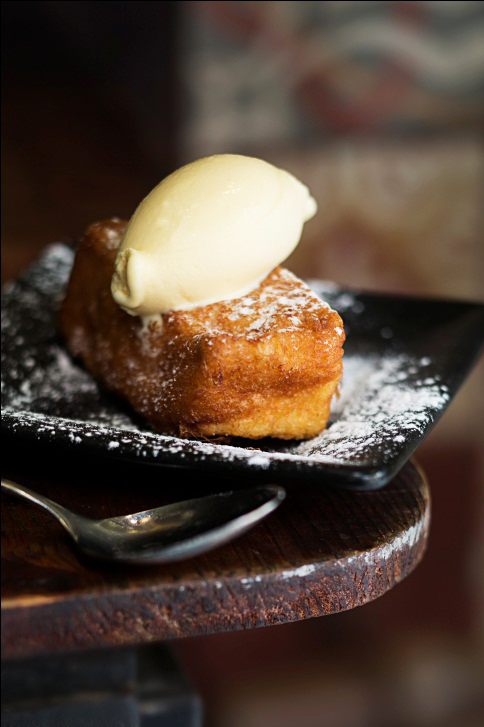
Courtesy of markusbassler.com
Torrija (with crema Catalana ice cream)
The torrija is a French toast-like dessert cooked traditionally during Easter time. It is made with dry bread that’s dipped in milk and fried in olive oil; then it is sweetened with honey, and served warm or cold. When tempered, it goes well with crema Catalana ice cream, see below.

Courtesy of Food Barcelona
Crema Catalana
You can find this on every menu in town—a rich, custardy dessert made with eggs, milk, cinnamon, and grated lemon peel, its burned top of caramelized sugar offering crunch with every bite. It must be cooked carefully, as it has to be a light cream. Crema Catalana is somewhat similar to the French crème brûlée, but it does not contain dairy cream nor vanilla, a common flavoring in the French version. Lovers of Spanish desserts: Don’t miss this!
This is, of course, only the tip of the Catalan-gastronomy iceberg, but we hope it’s an introduction mouthwatering enough to bring you to Barcelona to taste for yourself!
About the author: Nuria Canal was born in the north of Spain, near the Basque Country, but has been living in Barcelona for the past 30 years, mainly in the Gothic Quarter, where every corner brings a vital memory to her. After an extensive career as an artist in the field of contemporary art, then a creative in communication, and finally a manager of cultural projects, she is now with Food Lovers Company, dedicated to sharing her knowledge of Spanish gastronomy and her city, Barcelona. She loves this project because it lets her live her passion every day.










.jpg)
